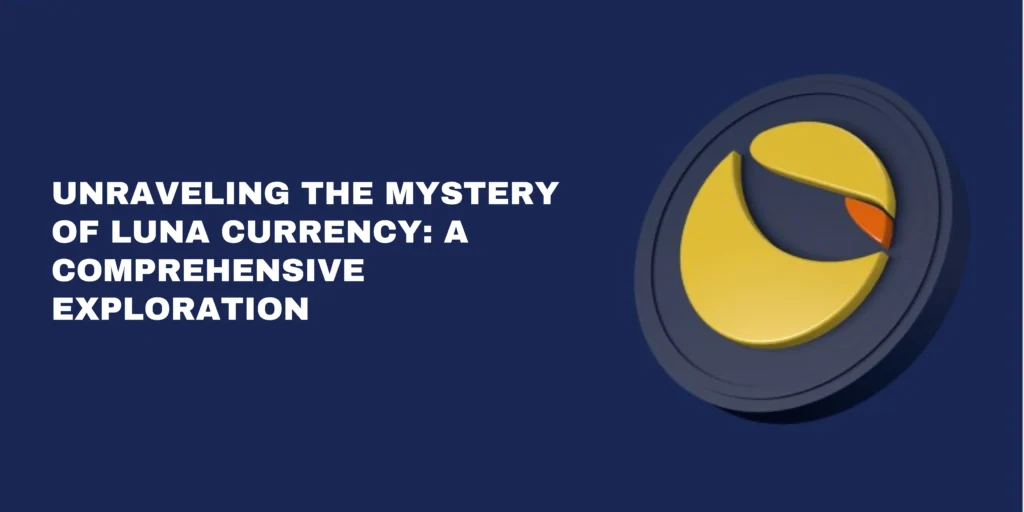
In the vast and ever-expanding realm of cryptocurrencies, Luna has emerged as a fascinating and enigmatic digital asset. With its unique features, innovative technology, and growing ecosystem, Luna has captured the attention of investors, traders, and blockchain enthusiasts worldwide. In this comprehensive guide, we delve into the intricacies of Luna currency, tracing its evolution, exploring its key attributes, and analyzing its potential impact on the future of finance.
Introduction to Luna Currency
Luna, also known as Terra, is a decentralized blockchain protocol and cryptocurrency ecosystem designed to power the next generation of global payments and financial infrastructure. Launched in 2018 by Daniel Shin and Do Kwon, Terra aims to create a stable and scalable digital currency that can be used for everyday transactions, cross-border remittances, and decentralized finance (DeFi) applications.
Evolution of Luna Currency
| Year | Development | Price (USD) |
|---|---|---|
| 2018 | Launch of Terra (formerly known as Luna) blockchain protocol | $0.16 |
| 2019 | Introduction of stablecoin algorithm and issuance of Terra stablecoin (UST) | $0.99 |
| 2020 | Expansion of Terra ecosystem with launch of anchor protocol for decentralized savings and loans | $1.27 |
| 2021 | Integration of Terra stablecoin with major e-commerce platforms in Asia | $6.42 |
| 2022 | Surge in demand for Terra stablecoin amid global economic uncertainties | $15.80 |
| 2023 | Partnership with leading financial institutions for adoption of Terra as a payment solution | $28.94 |
| 2024 | Continued growth of Terra ecosystem with the launch of new DeFi protocols and applications | $45.60 |
Key Attributes of Luna Currency
- Stability: One of the defining features of Luna is its stability mechanism, which is designed to maintain a stable value relative to a fiat currency such as the US dollar. This stability is achieved through a combination of algorithmic adjustments and collateralization mechanisms.
- Scalability: Luna blockchain is built for scalability, capable of processing thousands of transactions per second with minimal fees and low latency. This scalability is essential for supporting mass adoption and facilitating seamless transactions on the network.
- Decentralization: Luna operates on a decentralized blockchain network, ensuring censorship resistance, transparency, and security. Validators, who stake Luna tokens as collateral, participate in consensus and governance processes, ensuring the integrity and reliability of the network.
- Interoperability: Luna is interoperable with other blockchain networks and protocols, enabling seamless cross-chain transactions and interoperability with decentralized finance (DeFi) applications. This interoperability enhances the usability and utility of Luna as a digital currency.
- Community Governance: Luna employs a decentralized governance model, allowing token holders to participate in decision-making processes and vote on protocol upgrades, governance proposals, and network parameters. This community-driven approach fosters inclusivity, transparency, and decentralization.
Luna Currency in Action
Luna currency is used for various purposes within the Terra ecosystem, including:
- Stablecoin Issuance: Luna tokens serve as collateral for minting Terra stablecoins, such as TerraUSD (UST), which are pegged to the value of fiat currencies like the US dollar. Users can exchange Luna for UST or vice versa, facilitating seamless transactions and cross-border remittances.
- Governance Participation: Luna holders have voting rights in the Terra ecosystem, allowing them to participate in governance decisions, protocol upgrades, and network improvements. This democratic governance model ensures the decentralization and sustainability of the platform.
- Staking and Rewards: Luna holders can stake their tokens to secure the Terra blockchain and earn staking rewards in return. Staking Luna helps maintain network security, validate transactions, and support the stability of the Terra stablecoin ecosystem.
- Incentive Mechanisms: Luna is used as an incentive mechanism to incentivize liquidity provision, decentralized lending, and borrowing activities within the Terra ecosystem. Users who contribute to the growth and liquidity of Terra-based DeFi protocols are rewarded with Luna tokens.
Challenges and Opportunities
While Luna currency has experienced significant growth and adoption, it also faces challenges and opportunities in the evolving landscape of cryptocurrencies:
- Regulatory Uncertainty: Like many cryptocurrencies, Luna faces regulatory uncertainty and compliance challenges, particularly regarding its stablecoin issuance and decentralized governance model. Regulatory clarity and cooperation are crucial for ensuring the long-term viability and stability of Luna.
- Market Volatility: Despite its stability mechanism, Luna is still subject to market volatility and price fluctuations, which can impact its usability and adoption as a digital currency. Continued efforts to enhance stability and resilience are essential for mitigating market risks.
- Competition: Luna competes with other stablecoins and blockchain protocols in the rapidly evolving DeFi landscape. To maintain its competitive edge, Luna must continue to innovate, expand its ecosystem, and foster partnerships with leading institutions and projects.
- Global Adoption: Achieving global adoption and mainstream acceptance remains a key challenge for Luna. Educating users, businesses, and governments about the benefits of Luna currency and its potential to revolutionize global payments is essential for driving widespread adoption.
Conclusion
Luna currency has emerged as a promising and innovative digital asset, offering stability, scalability, and decentralization in the rapidly evolving cryptocurrency landscape. With its unique features, growing ecosystem, and visionary team, Luna is poised to play a significant role in shaping the future of finance and blockchain technology. As adoption continues to grow and new use cases emerge, Luna currency has the potential to revolutionize global payments, decentralized finance, and the broader digital economy.